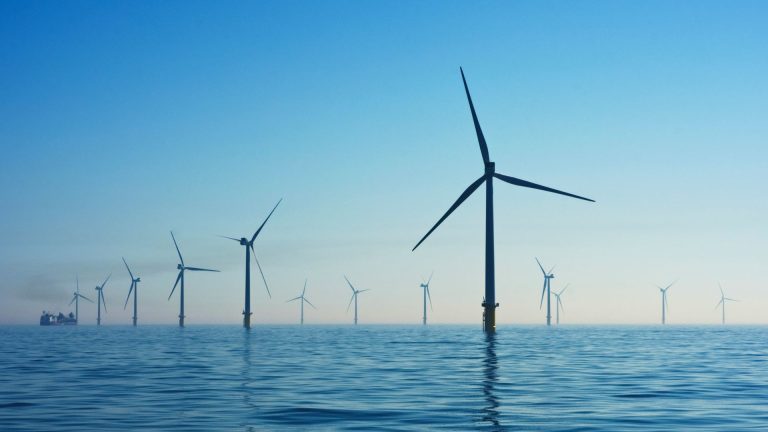47% – that is how much less of Poland’s land potential will be available for onshore wind investments, compared to the original government proposal, given the requirement introduced by the parliamentary commission to maintain a distance of 700 metres from residential housing becomes a reality. The previously consulted wording of the bill referred to 500 metres. In the Kujawsko-Pomorskie voivodeship alone, if the law enters into force in this modified form, this change means the loss of 65% of the area available for wind turbines.
The amendment to the law liberalising the 10H rule, which in practice has been blocking the development of wind power in Poland for years, adopted at the end of January by the parliamentary committee, is, according to Instrat estimates, twice as restrictive as the previous variant of the law that went through public consultations. This original variant envisaged setting the minimal distance at 500 metres from residential housing.
In practice, the adoption of the amendment in its current form (change in the required distance and other modifications to the wind investment permitting process) will not only cut onshore wind land potential in Poland by up to half but also significantly delay or paralyse many already advanced investment projects. Thus, enacting the amendment in the 700 metres variant will drastically slow down the pace of decarbonisation of the Polish power sector and increase the country’s bill for imported fossil fuels. This is not a true liberalisation of the 10H rule.

Even in the Lubuskie voivodeship, the least affected by the amendment, the leap from 500 to 700 metres equals a 31% reduction in available space. Other voivodeships where the impact of the amendment will be relatively small are Opolskie and Zachodniopomorskie. But even there, the area fit for onshore wind energy will shrink by almost a third.
Why such a big difference
It might seem that the difference between 500 and 700 metres is not significant, yet the consequences are immense, since this distance increases the radius of the circle drawn around each residential building where turbines are not allowed. It means that the difference of 200 metres translates into the amount of excluded space in the square ratio in which the area of the circle is calculated, not in a linear ratio (the area of the circle is calculated through π * r2).
For example, one house, assuming 500 m of the required distance, excludes 79 hectares from possible turbine development. At 700 metres – as much as 154 hectares.
It should also be noted that the Instrat calculations are estimates based on specific assumptions, which are explained in detail later in the text. It is likely that the area suitable for viable and technically feasible investments will in reality be much smaller.
Estimates by other experts
Across the analyses of the 500-to-700m amendment’s impact that have been made public, only Instrat’s calculations show figures separately for each voivodeship. The other estimates provide values for Poland as a whole.
Estimates from the Polish Wind Energy Association (PSEW), made at the end of January 2023, indicate that a change from 500 to 700 metres implies a 60-to-70% decrease in the wind capacity potential nationwide. This analysis is based on three case studies. Therefore, it has the advantage over Instrat’s work of analysing specific wind projects. This means that it takes into account, for example, the problem of narrow corridors, which is explained below. However, it also has a limitation of having been carried out on a small sample.
- The problem of narrow corridors is related to the width of the corridor available for development, e.g. between forest complexes. Although there might still be some available space left in the corridor, it might be too narrow to place even a single turbine. For example, a turbine with 75 metre-blades requires an unrestricted space of 150 metres in diameter. In such a case, Instrat’s analysis still indicates available space, because it does not take into account that a single wind turbine must not be arbitrarily small.
A recent analysis presented by Ambiens, a well-known environmental consulting company that has been working on RES projects for years, shows that if all the criteria indicated in the amendment are upheld, the area available for wind turbines will be reduced from 32,500 km2 to 18,000 km2, i.e. by 44%. The authors of the analysis have not made their methodology transparent to the public, which makes it impossible to verify, but their results are very similar to those obtained by Instrat.
Land available is not everything
The decrease in the area fit for onshore wind projects hampers the rate of their development, but there are more consequences, too. Due to the unforeseen amendment introduced at a late stage, after an apparent mature consensus on the 500 metres distance, the zoning plans that have been prepared within the past two years will have to be revised. Urban Consulting calculated at the beginning of February that 84% of the plans would need to be corrected in the whole country. In some voivodeships, including Kujawsko-Pomorskie and Mazowieckie, none of the already prepared plans could be used. However, it is difficult to verify these calculations without looking into the tool’s methodology and assumptions.
As a result of raising the distance limit to 700 m, the potential of the Kujawsko-Pomorskie voivodeship falls to around 300 km2. This, combined with a particularly big problem with zoning plans, may in practice prevent any new wind power capacity from being built in this part of Poland.
Additional impediment for new investments might also concern cross-border projects between municipalities. In accordance with the letter of the amendment under the procedure, an investment which, with its 700-metre radius, enters the territory of a neighbouring municipality, will have to be included in the development plans of both municipalities.
“This is almost unfeasible,” says Marek Wójcik, a representative of the Association of Polish Cities, quoted by Rzeczpospolita.
Financing the updates of spatial plans seems to be another burden. Although funds to cover these costs have been included in Poland’s Recovery and Resilience Facility, the values budgeted may prove to be too low considering increase in demand. In addition, the scale of necessary changes may exceed the capacity of the planning companies that will prepare such plans.
Finally, an additional problem is a need to amend investment plans that have been prepared for the 500m option. If even one turbine fails to meet the 700m requirement, the developer will have to modify the entire project.
How 700m will translate into RES capacity deployment and national targets
Previous calculations prepared by Instrat (What’s next after coal? RES potential in Poland, June 2021; Wind in the sails. Unlocking Poland’s onshore wind potential and 10H rule, January 2021) have indicated that setting a minimum distance of 500m against the current approx. 1.5km (10H rule) would mean that in the long term the space available for new wind turbine development would be 7.08% of Poland’s territory. Consequently, we could achieve onshore capacity potential (through new investments and upgrades) of 44 GW in Poland. For the 700m variant, we do not have equally detailed calculations – we estimate currently the reduction in land potential, not loss in potential capacity. However, we know for sure that the changes introduced in the 700m amendment mean that this potential will not be realised and that the growth of new capacity will be much slower.
From Instrat’s scenario analysis at the time (2021) under the 500m variant, onshore wind capacity could rise to around 18 GW by 2030 and 36 GW by 2040. We have been waiting for the liberalisation of the law for 2 years now and hence accrued a significant delay, which can still be compensated for. At the end of 2022, the installed capacity of onshore wind farms amounted to 7.7 GW, according to statistics from ARE and the Ministry of Climate and Environment, or even 9.2 GW according to Poland’s TSO (PSE). The discrepancy between these values has recently been discussed by PSEW – we will return to this topic soon.
With the 700m option on the table, Poland will almost certainly miss the target of 18 GW in 2030. Instead of reaching a value close to 20 GW by the end of the decade, Poland risks stopping onshore wind development exceeding 12 GW which will be deployed as a result of investments from the recent auctions by the Energy Regulatory Office (pol. URE) which fulfil the requirements of the 10H rule still in force.
Assumptions and limitations of the calculations
This means that the calculations:
- Do not take into account whether there are surface water areas at the sites of the proposed wind park (lakes and rivers, however, are often covered by forms of nature conservation, so are covered by another criterion), other developments and other buildings or infrastructure elements than those indicated in the criteria above.
- Do not take into account the wind maps in the different parts of the country and thus the viability of potential projects. It is therefore possible that part of the space will not be usable for wind investments because the wind will be too weak or uneven in these regions.
We have presented detailed calculations of the potential for wind power in the long term in the aforementioned 2021 studies. We will soon update our calculations and show how maintaining the 700m rule would affect Poland’s electricity mix decarbonisation pathway.
We used GLAES technology to carry out the calculations, with data sourced from Geoportal and the Forest Data Bank (pol. Bank Danych o Lasach).






